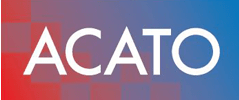Essential ISO Certifications for Healthcare Providers

Top ISO Certifications for Healthcare: Quality, Safety & Compliance
Selecting the right ISO certifications for healthcare sector organizations directly influences patient safety, regulatory compliance, and clinical efficiency. ISO certifications for healthcare providers—such as ISO 9001, ISO 13485, ISO 27001, ISO 14971, ISO 15189, and ISO 14155—establish proven frameworks for quality management, device oversight, data security, risk mitigation, lab competence, and clinical investigation integrity. This guide examines the most important ISO standards, illustrates how they elevate patient outcomes, outlines key implementation steps, addresses common hurdles, and advises on choosing accredited certification bodies. Healthcare organizations and ISO Certification Services for Healthcare Organizations can leverage these insights to build robust quality and safety management systems.
What Are the Most Important ISO Certifications for Healthcare Providers?
Essential ISO certifications for healthcare providers define structured frameworks that ensure consistent quality and safety across clinical services and medical device lifecycles. By adopting these standards, organizations meet regulatory requirements, enhance patient trust, and drive continual improvement.
| Standard | Scope | Key Benefit |
|---|---|---|
| ISO 9001 | Quality Management System | Streamlines processes and boosts patient safety |
| ISO 13485 | Medical Device QMS | Ensures device consistency and regulatory compliance |
| ISO 27001 | Information Security Management | Protects patient data and supports HIPAA/GDPR |
| ISO 14971 | Medical Device Risk Management | Identifies and controls hazards throughout device life |
| ISO 15189 & 14155 | Lab Competence & Clinical Trials | Guarantees diagnostic accuracy and ethical investigations |
These standards form an integrated ecosystem that underpins healthcare excellence and regulatory alignment.
Which ISO Standards Ensure Quality Management in Healthcare?

ISO 9001 establishes a quality management system that emphasizes leadership, process control, and continuous improvement within hospitals and clinics. By defining clear policies, documenting procedures, and conducting management reviews, ISO 9001 enhances service reliability and patient safety. This foundation supports the specialized requirements in device manufacturing addressed by ISO 13485.
How Does ISO 13485 Support Medical Device Manufacturers and Suppliers?
ISO 13485 mandates a risk-based quality management system tailored to medical device lifecycles, covering design, production, installation, and servicing. By enforcing traceability, supplier controls, and design verification, ISO 13485 ensures device safety, efficacy, and global market access. Its principles directly complement information security measures under ISO 27001. ISO 13485 is a comprehensive standard that outlines the requirements for a risk-based quality management system specifically tailored for the medical device industry. It encompasses all stages of the device lifecycle, including design, production, installation, and servicing. The standard emphasises the importance of implementing a quality management system that is not only compliant with regulatory demands but also effectively mitigates risks associated with medical devices. By enforcing stringent traceability protocols, robust supplier controls, and rigorous design verification processes, ISO 13485 plays a pivotal role in ensuring the safety and efficacy of medical devices. This systematic approach not only helps manufacturers to uphold high-quality standards but also facilitates their entry into the global market by meeting various international regulatory requirements.
Moreover, the principles embodied within ISO 13485 align seamlessly with information security measures outlined in ISO 27001. Both standards share a commitment to risk management and the protection of sensitive information throughout the product lifecycle. As the medical device industry increasingly emphasises data privacy and cybersecurity—especially given recent advances in technology—this synergy between ISO 13485 and ISO 27001 becomes critical. By integrating these quality and information security management systems, organisations can enhance their operational efficiencies while reinforcing consumer confidence in the safety and reliability of their medical devices. Such alignment not only promotes a holistic approach to quality and security but also positions manufacturers favourably within a competitive, highly regulated landscape.
Why Is ISO 27001 Critical for Healthcare Information Security?
ISO 27001 defines requirements for an information security management system (ISMS) that protects confidentiality, integrity, and availability of patient data. Through risk assessments, access controls, and incident response protocols, ISO 27001 shields sensitive records from breaches and supports compliance with HIPAA and GDPR. This data protection layer undergirds risk management processes in ISO 14971.
What Role Does ISO 14971 Play in Medical Device Risk Management?
ISO 14971 applies a systematic risk management process to medical devices, covering hazard identification, risk evaluation, control implementation, and residual risk analysis. By integrating risk management into each stage of device development and post-market surveillance, organizations minimize hazards and enhance patient protection. These risk controls dovetail with laboratory competence standards like ISO 15189.
How Do ISO 15189 and ISO 14155 Apply to Medical Laboratories and Clinical Investigations?
ISO 15189 specifies requirements for quality and competence in medical laboratories, ensuring accurate diagnostics through personnel qualification, equipment calibration, and method validation. ISO 14155 governs good clinical practice for medical device trials, emphasizing subject safety, data integrity, and ethical oversight. Together, they maintain trust in lab results and clinical evidence.
How Do ISO Certifications Improve Patient Safety and Healthcare Quality?
ISO certifications drive measurable improvements in patient outcomes by establishing rigorous process controls, risk analysis, and security safeguards. Through systematic documentation and regular audits, healthcare teams reduce adverse events, optimize resource use, and maintain diagnostic precision. ISO certifications play a crucial role in driving measurable improvements in patient outcomes within the healthcare sector. By establishing rigorous process controls, conducting comprehensive risk analyses, and implementing robust security safeguards, these certifications provide a framework that ensures high standards of care. Healthcare organisations that adhere to ISO standards systematically document their procedures, which not only enhances accountability but also fosters an environment of continuous improvement. This thorough documentation process enables teams to identify potential areas for risk and address them proactively, thereby mitigating adverse events that could compromise patient safety and care quality.
Furthermore, regular audits associated with ISO certifications promote optimisation of resource utilisation and uphold diagnostic precision. By engaging in routine evaluations, healthcare teams can identify inefficiencies and adjust workflows accordingly, ensuring that resources are allocated effectively to benefit patient care. This systematic approach empowers healthcare professionals to focus on delivering high-quality services while maintaining compliance with established guidelines. As a result, the implementation of ISO standards not only bolsters patient safety but also enhances overall healthcare delivery, leading to improved patient satisfaction and outcomes in the long run.
In What Ways Does ISO 9001 Enhance Operational Efficiency and Patient Safety?
ISO 9001 improves operational efficiency by standardizing workflows, setting performance metrics, and fostering leadership accountability. These measures reduce process variation, lower error rates, and accelerate corrective actions—directly benefiting patient safety and satisfaction.
How Does ISO 13485 Ensure Medical Device Safety and Regulatory Compliance?
ISO 13485 enforces a quality management framework that mandates device design verification, supplier audits, and change control. This discipline prevents manufacturing defects, streamlines regulatory submissions, and enhances device traceability for improved patient protection.
What Are the Information Security Benefits of ISO 27001 for Healthcare Providers?

ISO 27001 secures electronic health records and medical software by implementing encryption, user authentication, and vulnerability management. These controls reduce data breach risks, support continuity of care, and uphold patient privacy obligations under global regulations.
How Does Risk Management Under ISO 14971 Reduce Medical Device Hazards?
Risk management under ISO 14971 identifies potential device-related harms, quantifies their severity, and applies targeted controls—such as design modifications and warning labels—to mitigate risks. This proactive approach lowers incident rates and enforces post-market surveillance for ongoing safety.
Why Is Laboratory Accreditation Under ISO 15189 Vital for Accurate Diagnostics?
Accreditation to ISO 15189 validates a laboratory’s technical competence, from equipment calibration to staff proficiency. By ensuring standardized testing methods and quality assurance checks, ISO 15189 accreditation minimizes diagnostic errors and supports reliable clinical decision-making.Accreditation to ISO 15189 serves as a pivotal endorsement of a laboratory’s technical competence, encompassing multiple facets ranging from the meticulous calibration of equipment to the proficiency of its staff. ISO 15189 is specifically tailored for medical laboratories, establishing stringent requirements that ensure laboratories operate at the highest standards of quality and competence. This accreditation demands that laboratories maintain their equipment to precise specifications, ensuring that all testing apparatuses are regularly calibrated and validated. Moreover, it focuses on the continuous professional development of staff, mandating that all personnel possess the necessary training and skills to perform their roles effectively. As a result, laboratories achieving ISO 15189 accreditation can confidently demonstrate their capability to deliver accurate and reliable diagnostic results.
By adhering to the standardized testing methods and implementing thorough quality assurance checks prescribed by ISO 15189, laboratories significantly reduce the risk of diagnostic errors. This systematic approach not only bolsters the integrity of test results but also enhances clinical decision-making processes. Clinicians rely heavily on precise laboratory data to inform their choices regarding patient care, and accredited laboratories provide the assurance that their results are trustworthy and reproducible. Consequently, ISO 15189 accreditation fosters not only a culture of excellence within laboratories but also cultivates confidence among healthcare providers and patients alike. In an era where accurate diagnostics are crucial, such accreditation emerges as a cornerstone for sustaining the quality and reliability required in the healthcare sector.
What Are the Key Steps to Implementing ISO Certifications in Healthcare Settings?
Implementing ISO certifications follows a clear roadmap that engages stakeholders, assesses current systems, and establishes formal procedures.
- Assess current processes and identify gaps against ISO requirements.
- Define certification scope, objectives, and leadership roles.
- Develop and document policies, procedures, and work instructions.
- Train personnel on system requirements and risk controls.
- Conduct internal audits and management reviews to verify compliance.
- Engage an accredited certification body for external audit and registration.
- Perform continuous improvement based on audit findings and performance metrics.
These steps create a structured journey toward certification and sustained quality improvement.
How to Prepare for ISO 9001 Certification in Hospitals and Clinics?
Preparation for ISO 9001 begins with a gap analysis of existing quality procedures, followed by process mapping, staff training workshops, and pilot audits. Early engagement of leadership ensures alignment with patient safety priorities.
What Is the Process for Achieving ISO 13485 Certification for Medical Devices?
ISO 13485 certification involves creating a device-specific quality manual, validating design controls, implementing traceability matrices, and completing pre-certification supplier audits. Documented risk management under ISO 14971 is essential throughout this process.
How Can Healthcare Providers Implement ISO 27001 for Data Security Compliance?
Implementing ISO 27001 requires defining an ISMS policy, performing risk assessments on data assets, deploying technical safeguards (e.g., encryption), and establishing incident response plans. Regular internal audits validate control effectiveness.
What Are the Best Practices for Integrating ISO 14971 Risk Management with ISO 13485?
Best practices include harmonizing risk documentation templates, aligning design verification protocols with risk control actions, and incorporating risk reviews into management system processes. This integration streamlines audits and ensures cohesive oversight.
How to Navigate the Accreditation Process for ISO 15189 Medical Laboratories?
Navigating ISO 15189 accreditation entails documenting technical procedures, demonstrating staff competence through proficiency testing, calibrating and maintaining equipment logs, and hosting pre-assessment visits to confirm readiness.
Which Challenges Do Healthcare Providers Face When Pursuing ISO Certifications?
Healthcare organizations often encounter resource constraints, complex regulations, and compatibility issues when aligning multiple standards.
What Are the Typical Barriers to ISO 9001 Implementation in Healthcare?
Common barriers include limited quality management expertise, resistance to procedural change, and insufficient documentation resources. Overcoming these requires executive sponsorship and targeted staff training.
How to Overcome Regulatory and Technical Challenges in ISO 13485 Certification?
Challenges in ISO 13485 certification often stem from evolving device regulations and supplier qualification. Address these by adopting a regulatory watch process, updating technical files, and strengthening supplier audits.
What Are the Cybersecurity Challenges Addressed by ISO 27001 in Healthcare?
ISO 27001 combats threats such as ransomware, insider misuse, and unsecured IoT devices by enforcing access controls, encryption, and continuous monitoring of network vulnerabilities.
How Can Risk Assessment Difficulties Be Managed Under ISO 14971?
Managing risk assessment complexity involves using standardized hazard checklists, cross-functional risk workshops, and digital risk management tools to maintain exhaustive documentation.
What Solutions Support Medical Laboratories in Meeting ISO 15189 Requirements?
Solutions include investing in laboratory information management systems, partnering with external proficiency programs, and implementing regular internal audits to verify method validation and equipment performance.
How to Choose the Right Certification Body for Healthcare ISO Standards?
Selecting an accredited certification partner ensures audit credibility, recognized certification, and valuable insights for system improvement.
What Criteria Ensure an Accredited ISO 9001 Certification Body?
Healthcare providers should verify that ISO 9001 certification bodies hold accreditation from a reputable authority, demonstrate experience in medical settings, and offer comprehensive audit support. Reviewing directories of ISO 9001 certification bodies helps identify qualified partners.
How to Select Certification Partners for ISO 13485 Medical Device Compliance?
Partners must understand device regulations (e.g., MDR, FDA), provide design dossier reviews, and conduct technical file audits. Industry-specific expertise accelerates certification timelines and ensures regulatory alignment.
Why Is Choosing the Right ISO 27001 Certification Body Important for Healthcare Data Security?
An ISO 27001 auditor with healthcare experience can assess complex IT infrastructures, evaluate clinical system vulnerabilities, and recommend tailored security controls that protect patient records.
What Should Healthcare Providers Consider When Selecting ISO 15189 Accreditation Bodies?
Lab accreditation bodies should be recognized by international forums, demonstrate expertise in clinical chemistry and microbiology, and offer consultative gap assessments to guide pre-audit preparations.

